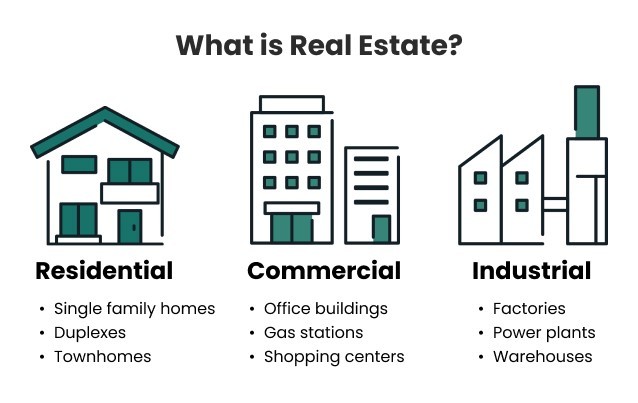When it comes to investing in real estate, commercial properties offer a diverse range of opportunities. Whether you are a seasoned investor or just getting started in the world of commercial real estate, understanding the various types of commercial properties is crucial. Each type of commercial property serves a unique purpose and caters to different businesses and industries. In this blog post, you will explore seven common types of commercial real estate properties, shedding light on their distinctive characteristics and potential benefits.
Type #1. Retail Properties
Retail properties are perhaps the most recognizable type of commercial real estate. These properties include shopping centers, strip malls, and standalone storefronts. Retail properties serve as the physical locations where businesses sell products and services to consumers. They are strategically located in areas with high foot traffic to attract potential customers. For example, commercial architects in Colorado metropolitan areas may design trendy storefronts to enhance the appeal of retail property, making it more attractive to potential tenants.
Retail properties offer investors the opportunity to earn income through rent from retail businesses. Lease agreements may vary, but they often include a base rent plus a percentage of the tenant’s sales. This can lead to a steady stream of income for property owners, making retail properties a popular choice in the commercial real estate market, whether they are starting or experienced owners.
Type #2. Office Buildings
Office buildings are another prominent category of commercial real estate. These properties encompass a wide range of structures, from single-story office parks to towering skyscrapers. They serve as the workspace for various businesses, including law firms, technology startups, and corporate headquarters that are looking for a permanent home.
Location is critical when it comes to office buildings, as businesses typically seek locations that are convenient for employees and clients. Commercial architects may be hired to design office spaces that are functional and aesthetically pleasing, catering to the needs of modern businesses. Investors in office buildings can benefit from long-term lease agreements, stable cash flow, and the potential for capital appreciation as the area develops around them.
Type #3. Industrial Properties
Industrial properties are essential for the production, storage, and distribution of goods. These properties can include warehouses, manufacturing facilities, and distribution centers. Industrial real estate plays a crucial role in supply chain management and logistics for most industries. The demand for industrial properties has seen significant growth in recent years, driven by the rise of e-commerce and the need for efficient distribution networks.
Commercial architects are often involved in designing modern warehouses and distribution centers equipped with advanced technology to meet the evolving needs of businesses. Investors in industrial properties can benefit from long-term lease agreements with established tenants, making this type of commercial real estate a stable investment option for most investors.
Type #4. Multifamily Properties
Multifamily properties include apartment complexes, condominiums, and other residential buildings with multiple units. While these properties are primarily residential, they also fall under the umbrella of commercial real estate when they are used for income generation by the owner.
Investing in multifamily properties can provide a steady stream of rental income. The demand for rental housing remains strong in many markets, making multifamily properties an attractive investment option.
Type #5. Hospitality Properties
Hospitality properties, such as hotels, motels, and resorts, catering to travelers and tourists is the fifth type of commercial real estate property. These commercial properties can vary widely in size and style, from boutique hotels to large luxury resorts. The hospitality industry is closely tied to tourism and business travel trends. Investors in hospitality properties can benefit from seasonal fluctuations in occupancy rates and daily room rates. Location, amenities, and guest experience are crucial factors that commercial architects consider when designing hospitality properties.
Type #6. Healthcare Properties
Healthcare properties encompass medical offices, hospitals, clinics, and specialized healthcare facilities. These properties are essential for providing healthcare services to communities. Investing in healthcare properties can offer stability, as the demand for healthcare services remains consistent. Additionally, long-term lease agreements with healthcare providers can provide reliable rental income.
Type #7. Special Purpose Properties
Special purpose properties are unique and often tailored to a specific use. Examples include theaters, religious facilities, and educational institutions. These properties may require specialized design and construction to meet their intended purpose. Investing in special-purpose properties can be more challenging due to their niche nature and limited potential uses. However, when located in high-demand areas, they can offer attractive returns to property investors.
Insights and Takeaways
Commercial real estate offers a diverse array of investment opportunities, ranging from retail properties to special-purpose properties. Each type of commercial property has its own set of advantages and considerations. When investing in commercial real estate, it’s essential to research the market thoroughly, consider location, and understand the specific needs of tenants within the chosen property type. Working with experienced professionals can help ensure the success of your commercial real estate investment endeavors. With careful planning and due diligence, commercial real estate can be a lucrative addition to your investment portfolio.
